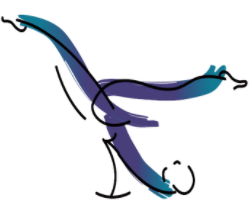Healthy Ways To Recover After an Intense Pilates Workout
Pilates is a fantastic way to boost your strength, flexibility, and overall well-being. However, after a vigorous session, your body needs to recuperate before another workout. To avoid feeling uncomfortable post-workout, here are some healthy ways to recover after an intense Pilates workout.
Proper Rest
After a challenging Pilates session, your muscles need downtime to repair and rebuild. If you’re new to Pilates, you’ll feel the intensity of engaging new muscle groups. Depending on how sore you feel afterward, recovery can range from 24 to 72 hours.
Sleep plays a significant role. Sleep between seven and nine hours each night to support muscle repair, boost hormone balance, and make you feel refreshed before another workout.
Hydration and Electrolytes
During Pilates, especially if the session is vigorous or performed in a warm studio, you likely lose a lot of fluids through sweat. Drink at least 16 ounces of water before and after the session and at least eight ounces in segments throughout the workout.
Electrolytes are also lost while working out, so you must replenish with electrolyte drinks or a powdered zero-sugar electrolyte drink mix. Proper hydration and replenishing of electrolytes prevent fatigue and aid muscle and joint function.
Nutrition
Equally important is fueling your body with the right nutrients. Within 45 minutes of your workout, consume a balanced meal or snack containing carbohydrates and protein. Carbohydrates replenish energy stores, while protein is critical in muscle repair. Try healthy, whole-food options like a smoothie with fruits and coconut milk, oatmeal with seeds and nuts, or a burrito packed with beans and rice.
Light Activity
Engaging in active recovery is another way to care for your body. Walking, stretching, or swimming on rest days can promote blood flow, reduce muscle stiffness, and help you feel more relaxed while remaining active.
Stretching
Stretching and foam rolling can further elevate your recovery routine. Incorporate static stretches targeting the areas you worked on during the Pilates session, such as hamstrings, hip flexors, and shoulders. Pair this with foam rolling to release tension, improve flexibility, and reduce muscle soreness. It may initially feel uncomfortable, but your body will feel much better in the following days.
Massage
Massages can alleviate muscle soreness, reduce tension, and encourage overall relaxation. Whether you choose a professional service or perform self-massage at home, this step can be a rewarding way to enhance recovery.
Make Recovery Part of Your Routine
These healthy ways to recover will ensure you feel good after an intense Pilates workout. By allowing your body the rest, nutrients, and care it needs, you’re setting yourself up for long-term fitness success.

